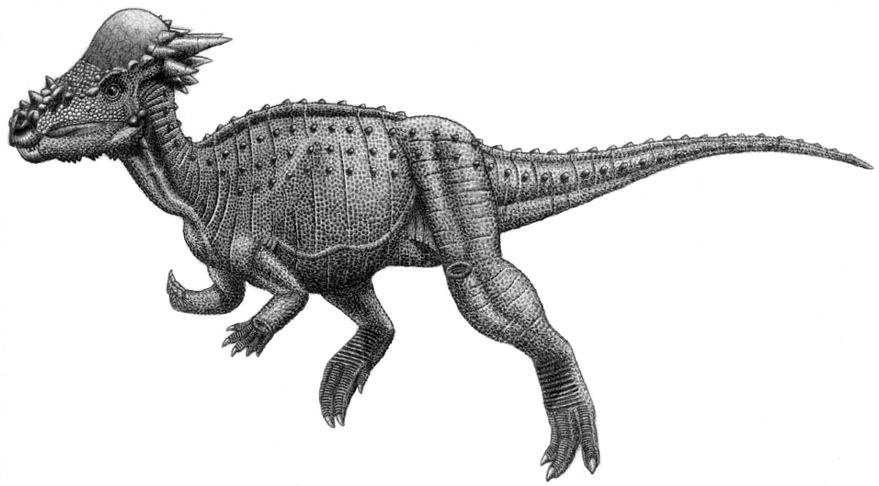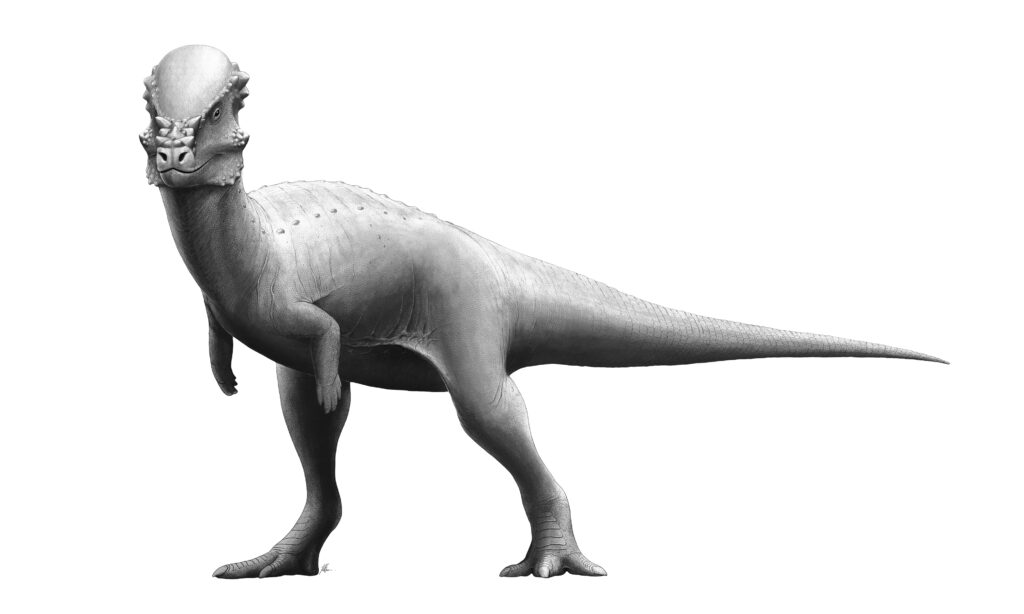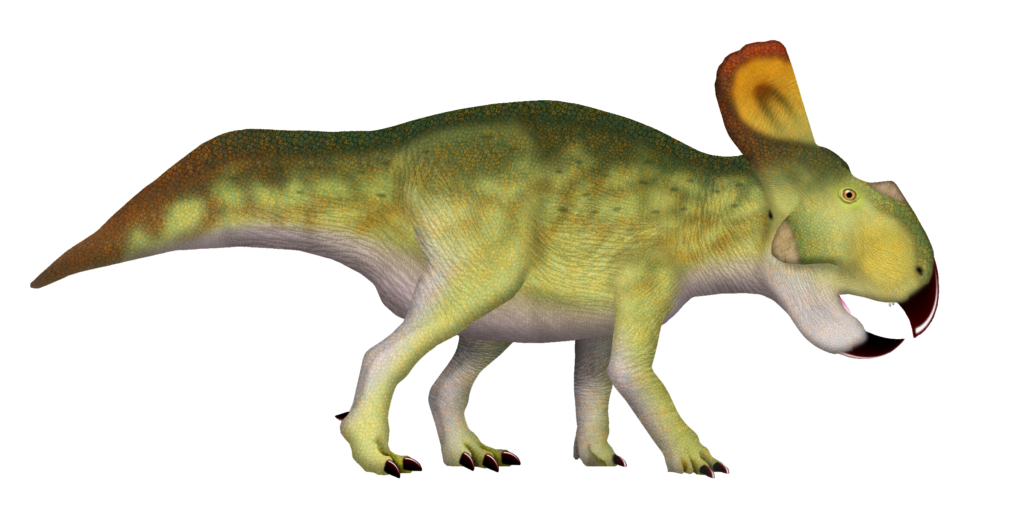The prehistoric world was not a peaceful place. For over 165 million years, dinosaurs dominated Earth’s landscapes, evolving into diverse species with specialized adaptations for hunting, defense, and survival. While much of our understanding of dinosaur behavior comes from skeletal anatomy and comparative studies with modern animals, paleontologists have uncovered remarkable fossil evidence of actual dinosaur confrontations—dramatic moments frozen in time that reveal the brutal reality of prehistoric life. These rare specimens, capturing dinosaurs in the act of fighting, provide unprecedented insights into their behavior, ecology, and the intense competitive pressures that shaped their evolution.
The Famous “Fighting Dinosaurs” of Mongolia

Perhaps the most spectacular evidence of dinosaur combat comes from Mongolia’s Gobi Desert, where a Velociraptor and Protoceratops were discovered locked in eternal battle. This extraordinary fossil, unearthed in 1971, shows the predatory Velociraptor with its sickle-shaped claw embedded in the Protoceratops’ neck, while the herbivore appears to have caught the raptor’s right arm in its beak. Scientists believe these mortal enemies were buried instantly by a collapsing dune, preserving their final moments with exceptional detail. This 80-million-year-old specimen provides direct evidence of predator-prey relationships and hunting strategies, confirming that the Velociraptor used its specialized foot claw as a weapon rather than just for show or display purposes.
Dueling Dinosaurs: The Montana Discovery

Another remarkable case involves the “Dueling Dinosaurs” discovered in Montana in 2006—a Tyrannosaurus rex and a Triceratops preserved mid-battle. This extraordinary fossil shows these iconic adversaries potentially engaged in combat, with evidence suggesting the T. rex may have teeth embedded in the Triceratops’ body. The specimen is so well-preserved that skin impressions and soft tissues are visible, offering unprecedented details about both dinosaurs. After years of legal disputes regarding ownership, this invaluable scientific treasure was acquired by the North Carolina Museum of Natural Sciences in 2020. Researchers are now conducting careful analysis to determine whether this truly represents a predator-prey encounter or if the dinosaurs simply died nearby and were buried together.
Evidence of Intraspecies Combat

Not all dinosaur conflicts involved predator-prey relationships—many species fought amongst themselves, likely over territory, mates, or resources. Pachycephalosaurs, with their distinctive dome-shaped skulls, show evidence of head-butting behaviors similar to modern bighorn sheep. CT scans of these “bone-headed” dinosaurs reveal healing fractures and lesions consistent with repeated high-impact collisions. Similarly, some ceratopsian dinosaurs like Triceratops display damaged frills and horn injuries that likely resulted from competitive sparring with members of their species. These intraspecies combat adaptations evolved independently in multiple dinosaur lineages, suggesting that ritualized combat was a widespread behavioral strategy throughout the Mesozoic Era.
Tyrannosaurus Bite Marks: Evidence of Cannibalism

Some of the most compelling evidence of dinosaur aggression comes from bite marks found on fossil bones. Particularly striking are Tyrannosaurus rex specimens bearing bite marks that match the tooth pattern of other T. rex individuals. These marks often show signs of healing, indicating that the attacked dinosaur survived the encounter. In other cases, T. rex bones show unhealed bite marks, suggesting either post-mortem scavenging or fatal attacks from other tyrannosaurs. A famous example is a T. rex nicknamed “Sue,” whose skull and ribs bear healed puncture wounds consistent with T. rex tooth dimensions. This evidence indicates that tyrannosaurs engaged in violent intraspecific conflicts and potentially even cannibalistic behavior, challenging earlier notions that large predatory dinosaurs avoided direct combat with equally matched opponents.
Tail Club Combat in Ankylosaurs

Ankylosaurs, the heavily armored “tank” dinosaurs, evolved spectacular defensive weapons, including tail clubs capable of delivering devastating blows. Fossils of ankylosaurs like Ankylosaurus and Euoplocephalus reveal specialized tail vertebrae that formed a rigid handle connected to a massive bony knob. Computer modeling suggests these clubs could generate enough force to break bones. The discovery of damaged ankylosaur clubs with healing fractures indicates these weapons were actively used in combat situations. Even more compelling, paleontologists have found tyrannosaur bones with distinctive impact fractures consistent with ankylosaur tail strikes. This evidence confirms that ankylosaurs weren’t merely passively armored but actively defended themselves when threatened by predators or competed with rivals using their impressive biological weapons.
Ceratopsian Frill and Horn Injuries

The elaborate frills and horns of ceratopsian dinosaurs like Triceratops have long been thought to serve display and combat functions. Fossil evidence now strongly supports this theory, with multiple specimens showing damage patterns consistent with aggressive interactions. Triceratops skulls frequently exhibit puncture wounds, broken horn tips, and healed fractures that match the dimensions of other Triceratops horns. A particularly noteworthy specimen shows a Triceratops horn tip embedded in another Triceratops’ frill, providing indisputable proof of violent confrontations between these herbivores. Paleontologists believe these elaborate head ornaments evolved through sexual selection pressures, with the most dominant individuals gaining reproductive advantages through combat success, similar to modern deer and antelope species whose horns and antlers serve both as weapons and status signals.
The Mapusaurus Bonebed: Evidence of Pack Hunting

Not all dinosaur confrontations were one-on-one affairs. The discovery of a Mapusaurus bonebed in Argentina—containing at least seven individuals of this enormous carnivore related to Giganotosaurus—suggests that some theropods may have hunted in coordinated groups. What makes this site particularly fascinating is evidence that these massive predators targeted equally enormous prey: sauropods like Argentinosaurus, possibly the largest land animal that ever lived. Researchers found Mapusaurus teeth and bones alongside sauropod remains showing distinctive predation marks. This discovery challenges the traditional view that large theropods were solitary hunters and suggests some engaged in pack-hunting strategies to take down prey too formidable for a single predator. The social dynamics revealed by this site indicate that dinosaur combat sometimes involved complex multi-individual strategies rather than simple one-on-one confrontations.
Spinosaurus: Aquatic Combat Specialist

Recent discoveries have dramatically transformed our understanding of Spinosaurus, revealing it as a specialized semi-aquatic predator unlike any other known dinosaur. Fossil evidence shows Spinosaurus had dense bones for buoyancy control and a paddle-like tail optimized for underwater propulsion. These adaptations suggest Spinosaurus engaged in a completely different style of combat than land-based theropods—likely ambushing prey while swimming. Remarkably, Spinosaurus teeth have been found embedded in the remains of large prehistoric fish and even pterosaurs, indicating diverse predatory behaviors. One specimen shows a Spinosaurus tooth lodged in a pterosaur vertebra, suggesting these sail-backed giants occasionally attacked flying reptiles, perhaps when they came to water to feed or drink. This evidence of aquatic predation represents a unique combat strategy among dinosaurs, highlighting the incredible behavioral diversity that evolved over millions of years.
Modern Technology Revealing Ancient Battles

Advances in technology have revolutionized how paleontologists analyze evidence of dinosaur combat. CT scanning now allows researchers to examine fossils non-destructively, revealing internal damage patterns and healing processes invisible to the naked eye. Computer modeling techniques can simulate bite forces, impact mechanics, and structural limitations of dinosaur weapons, providing testable hypotheses about combat behaviors. Synchrotron imaging has revealed microscopic details of tooth scrapes and bone remodeling around injury sites, distinguishing between predation attempts, scavenging, and intraspecific combat. Finite element analysis allows scientists to model stress distribution during hypothetical combat scenarios, testing whether proposed fighting techniques are biomechanically feasible. These technological advances have transformed speculation about dinosaur combat into a rigorous scientific discipline, with each discovery adding detail to our understanding of prehistoric violence.
Dinosaur Combat Injuries vs. Pathologies

One challenge for paleontologists is distinguishing combat injuries from pathological conditions or post-mortem damage. Genuine combat injuries typically show distinctive patterns: bite marks matching specific predator dentition, impact fractures consistent with known weapons like tail clubs or horns, and evidence of healing indicating survival after the encounter. Conversely, diseases like osteomyelitis (bone infection) produce different bone modification patterns with irregular margins and abnormal bone growth. Careful taphonomic analysis helps scientists differentiate damage occurring during life from post-mortem processes like weathering, trampling, or transportation by water. Recent research on the famous Tyrannosaurus “Sue” revealed that some features previously interpreted as battle wounds were pathological conditions, including a jaw infection that would have been debilitatingly painful. This highlights the importance of cautious interpretation when studying potential evidence of dinosaur combat.
Sexual Dimorphism and Combat Evolution

Many modern animals show sexual dimorphism related to combat behaviors, with males often developing specialized weapons for competing over mates. Evidence suggests similar patterns existed among dinosaurs, though identifying sex-based differences in fossil species remains challenging. Some pachycephalosaurs show two distinct dome morphologies within the same species, potentially representing males with thicker combat domes versus females with less pronounced structures. Similarly, certain ceratopsians display two frill patterns within a species, suggesting sex-based anatomical differences. Fossil evidence of combat injuries tends to cluster on presumed male specimens, paralleling patterns seen in modern sexually dimorphic species like elephant seals or deer. These observations suggest that sexual selection through combat may have driven the evolution of elaborate structures in many dinosaur lineages, explaining the seemingly impractical nature of some dinosaur adaptations that appear optimized for display and conflict rather than straightforward survival advantages.
Dinosaur Combat in Popular Culture vs. Scientific Reality

Popular depictions of dinosaur combat often prioritize spectacle over scientific accuracy, portraying constant violent confrontations between different species. While fossil evidence confirms dinosaurs did engage in dramatic battles, the reality was likely more nuanced than Hollywood portrayals suggest. Most predators, ancient and modern, prefer targeting vulnerable prey rather than risking injury against formidable opponents. The famous Velociraptor versus Protoceratops fossil represents an unusual preservation of a high-stakes encounter that likely ended fatally for both participants. More common were probably strategic confrontations with ritualized displays to assess opponents before physical contact, similar to modern predators. Intraspecific combat likely followed predictable patterns, minimizing fatal outcomes, as seen in modern horn-bearing mammals that rarely fight to the death. Scientific evidence suggests that inosaur combat was an important but calculated aspect of these animals’ lives—a serious business where injury could mean death in a world without medical care.
Conclusion: What Dinosaur Battles Teach Us About Evolution

The fossil record of dinosaur combat provides a remarkable window into the selective pressures that shaped these magnificent creatures over millions of years. Each bite mark, broken horn, and healed fracture tells a story of survival, competition, and adaptation. These ancient battles weren’t meaningless violence but powerful evolutionary forces driving the development of spectacular anatomical features—from the reinforced dome skulls of pachycephalosaurs to the elaborate defensive armor of ankylosaurs. By studying the evidence of dinosaur combat, we gain insights not just into prehistoric behavior but into fundamental evolutionary principles that continue to shape life on Earth today. As new technologies and discoveries continue to emerge, our understanding of dinosaur combat will undoubtedly expand, revealing ever more detailed glimpses of the dramatic struggles that characterized life in the Mesozoic Era.




